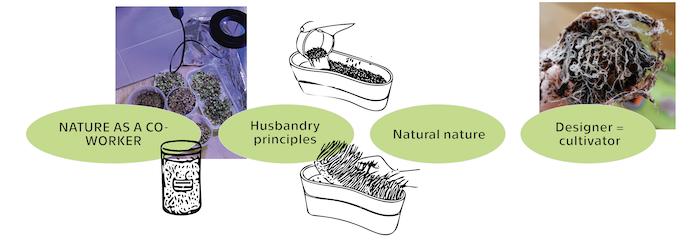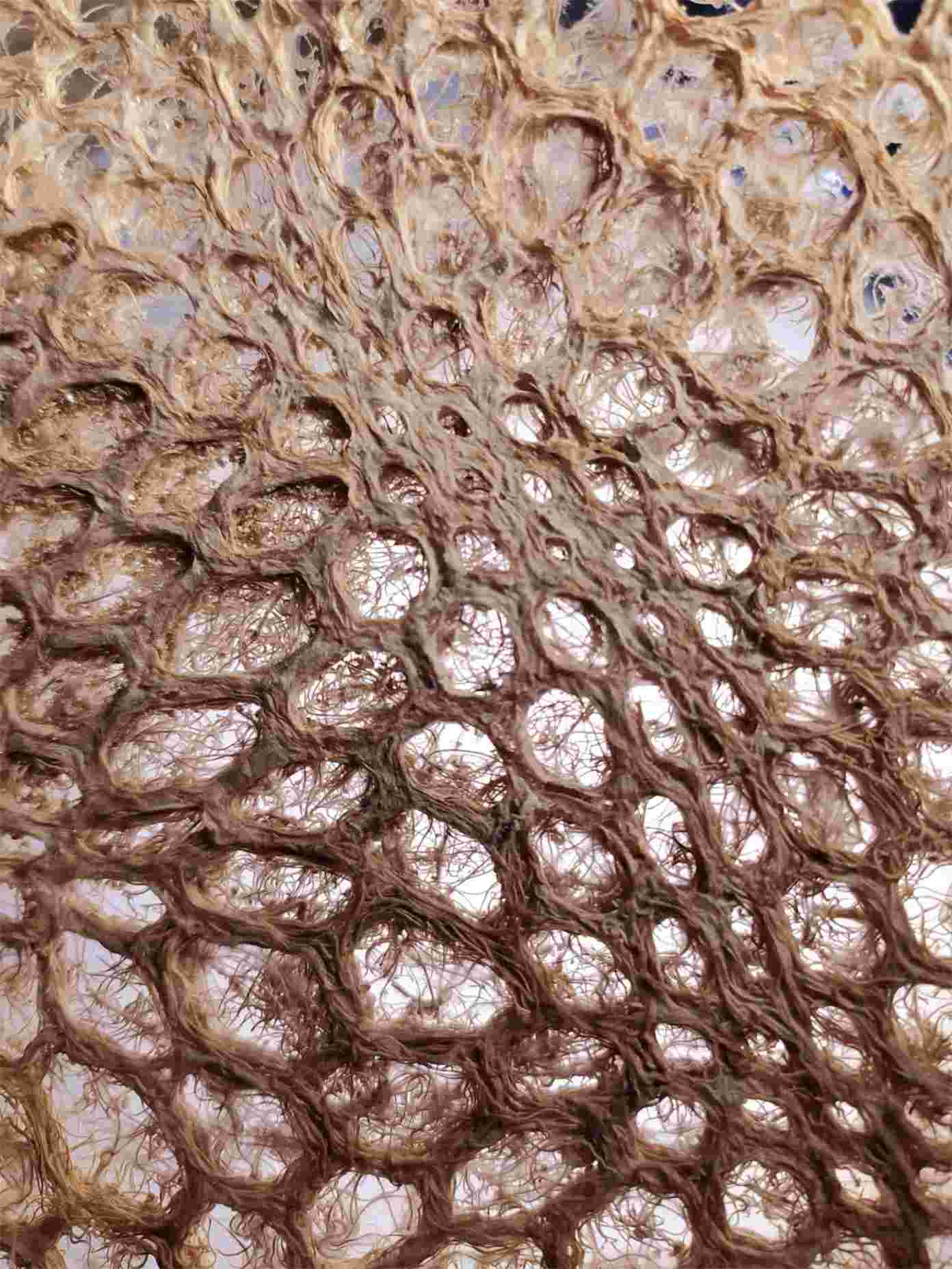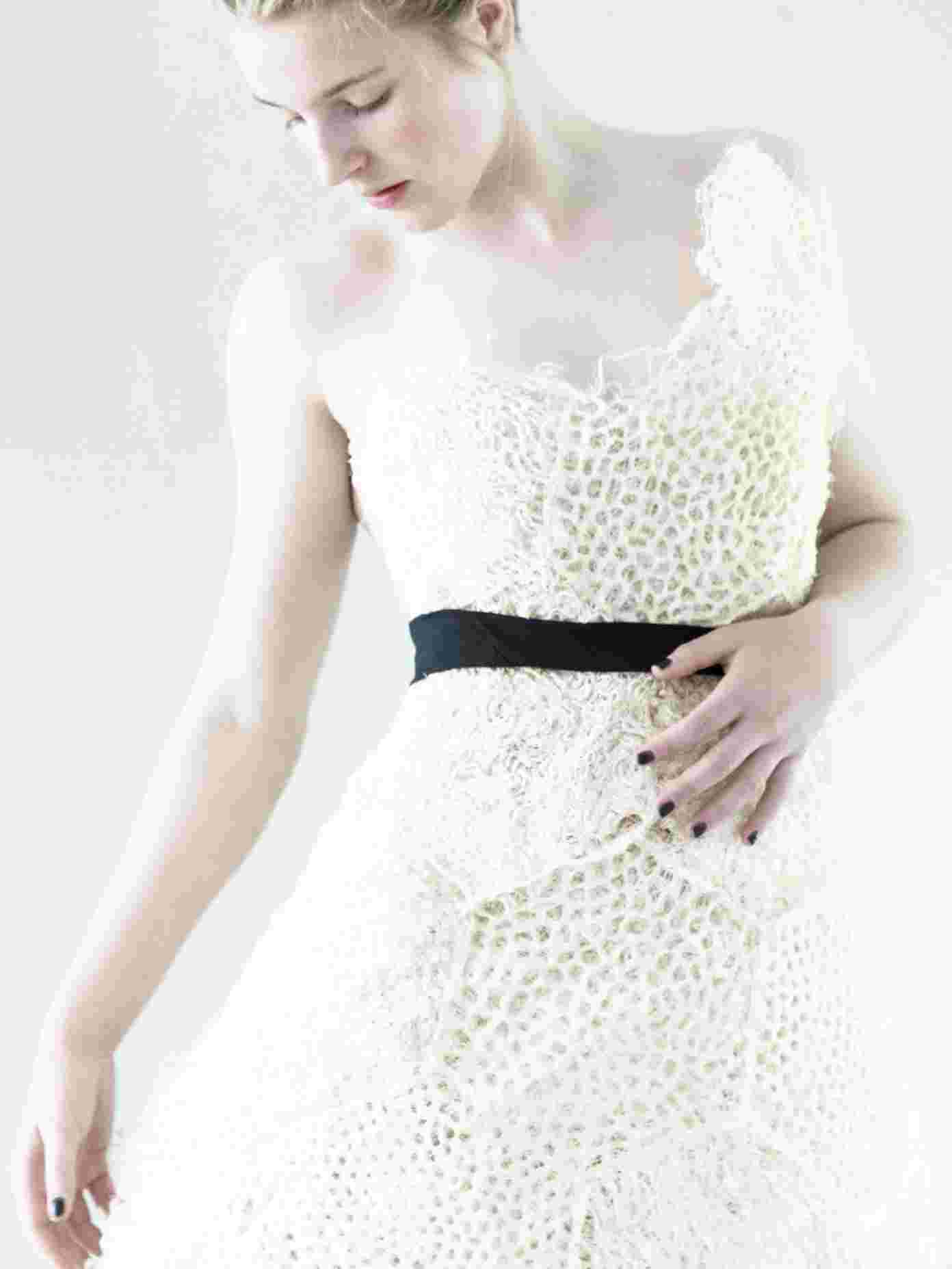THE SPECULATIVE PART OF THE PROCESS | Biodesign approaches for fabricating textiles¶

BIODESIGN approaches for fabricating textiles¶
As a designer, I am constantly reflecting on the processes of creating fashion collections with regards to material sustainability. I often question the impact of my work given that the fashion industry produces over 92 million tonnes of waste and consumes 1.5 trillion tonnes of water annually (UNEP 2023). I wonder how many steps we really need to produce a product and how we can reduce waste and save energy resources in fashion design.
Today, fashion designers are making conscious efforts to collaborate with nature and create sustainable fashion pieces that work in harmony with the natural environment. This approach involves considering the entire cycle of the fashion product and promoting the idea of working directly with nature. One sustainable alternative to product design fabrication that does not use synthetic materials is bio-fabrication or growing design. This method involves the direct growth of a material from a living organism and plants.

Using bio-based materials in fashion design offers numerous benefits. For instance, materials that grow naturally without the need for artificial energy can be sustainable throughout their entire lifecycle. The main advantage of bio-based materials within the fashion industry is that they originate from renewable resources and therefore enable resource-efficient components. This, in turn, can reduce our environmental impact and help mitigate the effects of climate change.
With the Amber Grain (Microknit) project, I intend to communicate the message of using different approaches for fabricating textiles. The roots of plants weave themselves while looking for nutrition and water, but this process occurs through human cooperation, who provide the plant with suitable conditions and respond to its needs. This theme reminds us to pay attention to the cycles of nature, and in return, nature rewards us. The pattern or shape we create to make the fabric allows the plant to grow through it.
TRADITIONAL | Manufacturing stages¶

BIODESIGN | Key manufacturing stages¶

STATE OF THE ART | Existing projects research¶
There are currently no materials available on the market that are made from root structures. However, some experimental and artistic projects exist. I came across some fascinating projects on the topic that served as an excellent foundation for my research to build upon.

Rootskin - biodegradable building skin fabric grown in soil and by plant roots.¶
During the project, I had a very interesting conversation with Fiona about developing textiles for the construction industry. I am grateful for her inspiration, advice, and tips. The goal of the project, named RootSkin, was to develop a strategy to harvest fruits above the soil level for food and roots below the ground to create a textile. This textile is translucent (depends on density) and biodegradable, which makes it an excellent skin material for buildings. The RootSkin research focused on patterns, plants, and mold and bottom panel material to create the desired textile. (Conserva, A; Demeur, F; Farinea, C. 2022)

InterWoven - Diana Scherer¶
Interwoven is a fascinating project by Diana Scherer, a Dutch artist who explores the intersection of art, nature, and technology. In this project, Scherer employs the natural growth patterns of plant roots to create intricate and beautiful textile-like structures.The process involves Scherer planting various types of seeds in specific patterns and then manipulating the roots' growth by controlling factors such as light, moisture, and nutrients. As the roots grow, they intertwine and form dense networks, which Scherer guides into predetermined shapes and designs. The resulting artworks are unique and visually striking, resembling woven textiles or intricate lace patterns. By harnessing the growth potential of plant roots, Scherer blurs the boundaries between art and science, highlighting the inherent beauty and complexity of natural processes. (Scherer D. 2019)
Interwoven not only produces stunning visual artworks but also raises questions about our relationship with nature, the potential applications of biotechnology in art and design, and the interconnectedness of all living organisms. It serves as a thought-provoking exploration of the possibilities that emerge when we collaborate with the natural world. (Scherer D. 2019)

Grown from Root: Woven by Nature - Zena Holloway¶
Zena Holloway collaborates with nature in a unique way. She cultivates wheatgrass seed in beeswax templates that have been meticulously carved, and allows them to grow for 12 days. During this time, the shoots grow up to 20cm, while the roots intricately bind below to form naturally woven structures. To ensure sustainability, organic and locally sourced ingredients are used in the process. Additionally, water is reused from run-off, and any excess shoot, seed, or root is repurposed as animal fodder, resulting in no waste. (Symbio(s)cene 2021)
I fully agree with Zena Holloway's thoughts. Her visionary approach sets the foundation for a future where fashion and art can be cultivated instead of manufactured, thus having a positive and long-lasting impact on our collective awareness. Her works are a great source of inspiration for me.
